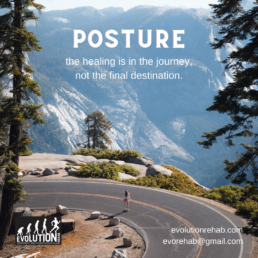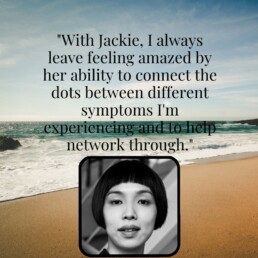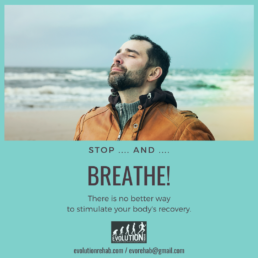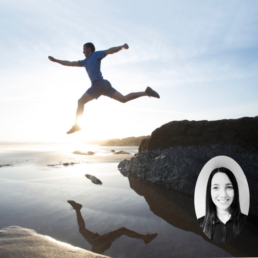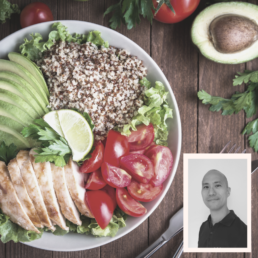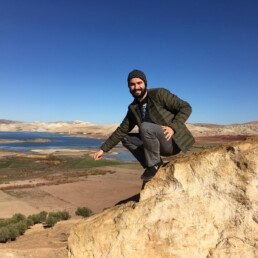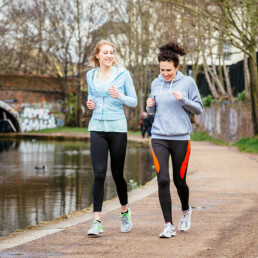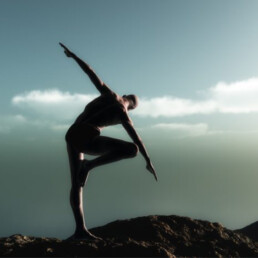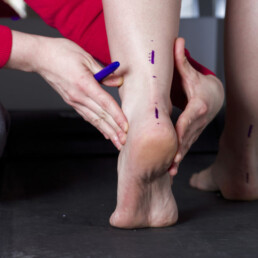Posture......It is important, but not how we think!
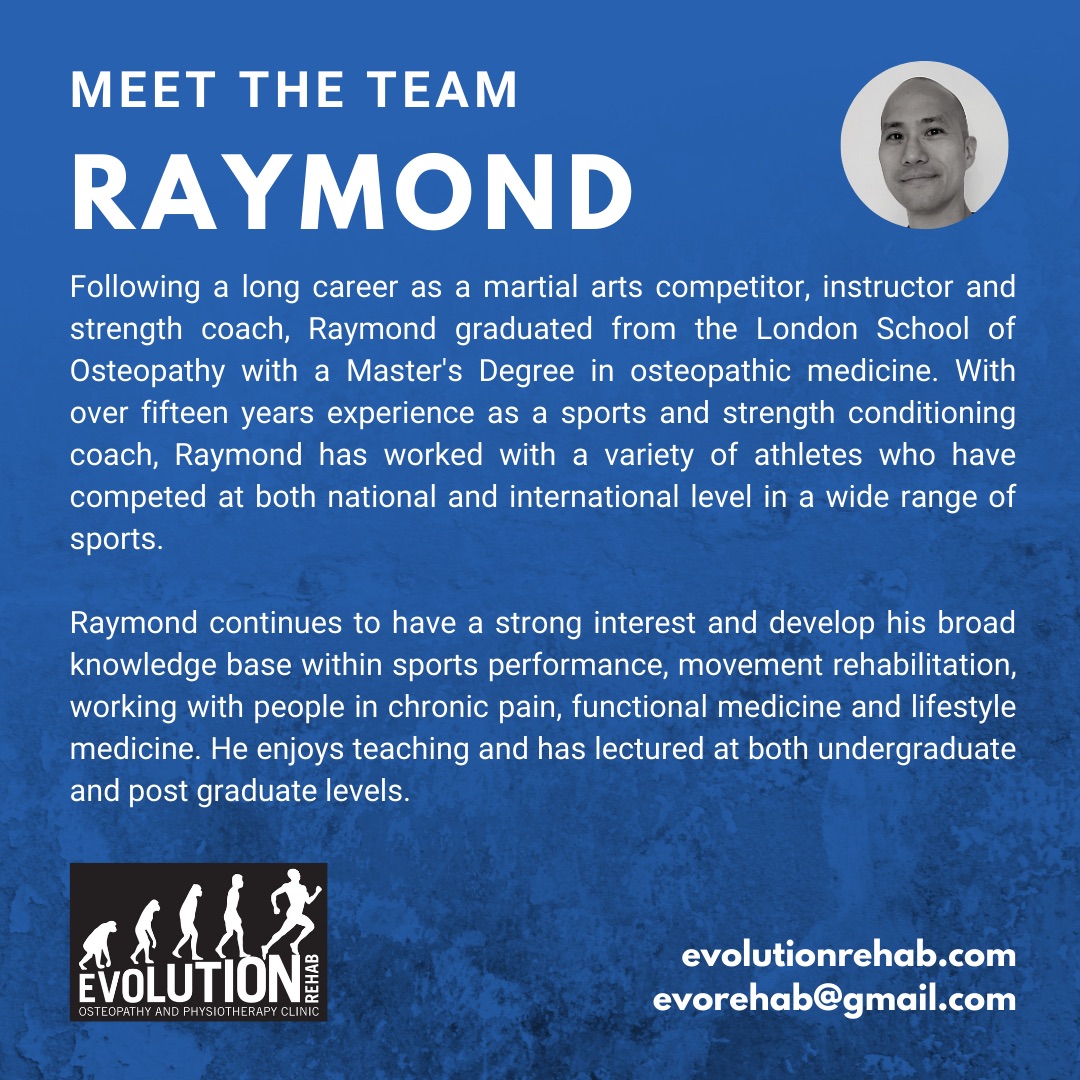 Posture is often misunderstood, and it is a commonly oversimplified concept within the context of healthcare and movement today.
Posture is often misunderstood, and it is a commonly oversimplified concept within the context of healthcare and movement today.
So many of us attribute moral value to our postures. We often talk about our posture and how bad it is, or how poorly we seem to hold ourselves. Historically, posture has always been viewed as a concept of pure vertical spinal alignment in which we are required to best position ourselves, for the purposes of most effectively counteracting the perpetual downward pull of gravity upon our bodies.
Unfortunately, this conception of posture has also lead many people (including some therapists!) to develop an erroneous belief that there is an idealised body position for our spines and backs which we should always remain within, and any slight deviation of our structure away from this idealised position will incur costly damage to our bodies (and our spines!).
 Unfortunately, this understanding of posture is oversimplified and incorrect. In reality, posture is a dynamic process which changes in relation to the different environments that we find ourselves within, it responds to the varying emotional states that we possess and it continuously fluctuates in response to the different physical tasks that we undertake.
Unfortunately, this understanding of posture is oversimplified and incorrect. In reality, posture is a dynamic process which changes in relation to the different environments that we find ourselves within, it responds to the varying emotional states that we possess and it continuously fluctuates in response to the different physical tasks that we undertake.
All of the structures within our bodies have evolved to both need and like movement, and this is no different when it comes to the various structures that constitute our backs. In fact, the way to keep and maintain a healthy back is to both safely and regularly inject a variety of different movements into our spines on a daily basis.
 This is not to say that posture is not important! The strategies that we use to coordinate our postural control can determine the efficiency of our movement and how well we are able to move on a daily basis.
This is not to say that posture is not important! The strategies that we use to coordinate our postural control can determine the efficiency of our movement and how well we are able to move on a daily basis.
At Evolution Rehab, we don’t like to look at posture as good or bad, we prefer to look at posture with regards to whether it is both efficient and appropriate for the task that is being undertaken.
 Effective posture should be relaxed, coordinated, appropriately aligned to reflect the task that we are doing, and provide a proper foundation in which our muscles are able to efficiently move our bodies.
Effective posture should be relaxed, coordinated, appropriately aligned to reflect the task that we are doing, and provide a proper foundation in which our muscles are able to efficiently move our bodies.
As stated by noted Russian physiologist, Nicholai Bernstein, “Trying to move with inefficient posture is like trying to write with a floppy pen!”
Traditionally, posture has been taught in a very prescriptive and direct manner. “Stand up properly! Sit up straight! Pull your stomach in! Hold your shoulders back!” Whilst these commands may address some of the visual aspects of bringing your spine into a position of upright alignment, the result is a postural strategy which is stiff, rigid, restricts proper movement within the body (including breathing), tiring in terms of energy and therefore unsustainable in the short term, let alone the long term!
 The purpose of postural training, is to help you to learn effective strategies of body alignment, balance and coordination, which all serve as an important platform from which you are able to learn efficient, pain free movement for life, sport and performance. It will provide a vital central axis around which you develop a better understanding of your balance, and a greater awareness of the sense of location within your own body.
The purpose of postural training, is to help you to learn effective strategies of body alignment, balance and coordination, which all serve as an important platform from which you are able to learn efficient, pain free movement for life, sport and performance. It will provide a vital central axis around which you develop a better understanding of your balance, and a greater awareness of the sense of location within your own body.
In essence, the goal of postural training is a gentle and extremely accessible way to help you improve your confidence in the control of your own body, and serve as a foundation to enable you to learn light, effortless, fluid and dynamic movement. In terms of rehabilitation, this is vital for your recovery moving forwards!
Our hope is that through postural training, you will engage within positive movement strategies which will allow your brain to effortlessly find the most appropriate, efficient posture and body position, in relation to the task that you are doing.
Hence, once you have established a foundation of efficient, effortless and beautifully balanced upright posture, you will be able to use this as a positive reference for all your functional and dynamic movement learning thereafter.
At Evolution Rehab, postural training is an integral component within the process of injury rehabilitation, movement performance and sporting performance, for most of the patients and clients who attend our clinic.
If you want to get a head start on your journey of both improving your movement and your posture, download our Free Postural Reset Promo Handbook.
The password for the download is:
POSTUREISIMPORTANT
Alternatively, if you wish to find out more our Postural Reset Programme and how it may help you to reduce pain or improve your performance on the field, please feel free to drop us an email at evorehab@gmail.com, and one of our team will be happy to get back to you.
Periods: Knowing your Normal!
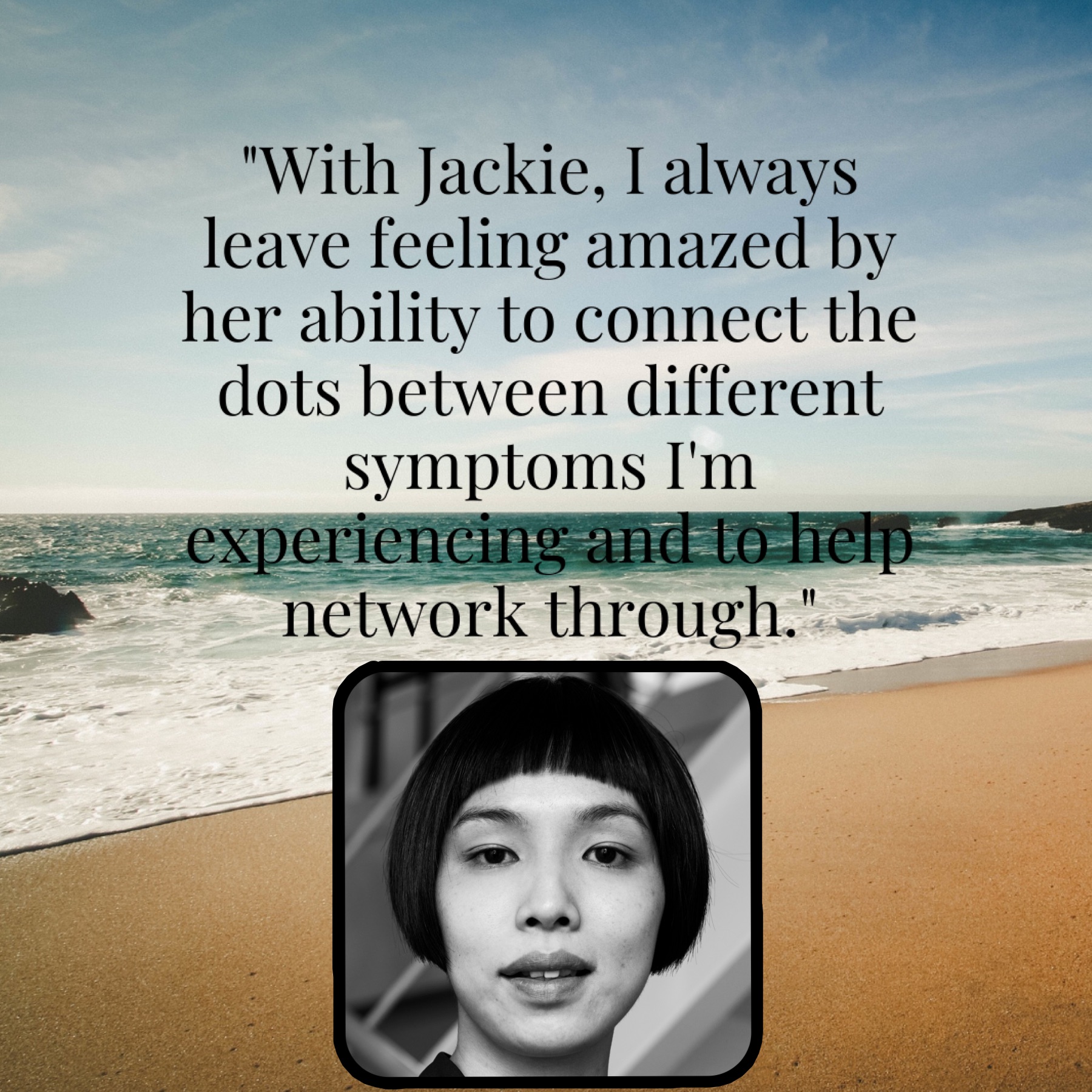 I am writing this blog on the tail-end of my period. My first period for five years, and my first menstrual bleed since September 2018. I was elated, overwhelmed and so happy when I saw blood on the toilet paper, that I texted a host of messages to my close friends and felt a great sense of relief and joy!
I am writing this blog on the tail-end of my period. My first period for five years, and my first menstrual bleed since September 2018. I was elated, overwhelmed and so happy when I saw blood on the toilet paper, that I texted a host of messages to my close friends and felt a great sense of relief and joy!
There’s a story to tell about missing periods, and I will get into that one day. Today, I want to dive into the monumental difference between “My First Period Ever” (MFPE) and Period 2020. These two experiences are literally at opposite ends of the spectrum.
When I got MFPE, I was eleven years old and away at camp. Someone else pointed it out to me. I had the vaguest idea as to what was going on, and I had cramps. The next few periods were as uncomfortable, but I was getting better at waddling around with what felt like 3 pairs of socks lining my pants. I decided periods were awful, “being a woman” sucked, and hoped that everything would just go away. I was 18 before I discovered that Premenstrual Stress was real. Prior to that I chalked the mood swings and irritability up to “being a woman”. I knew nothing of cycles, so I resented my body, this thing capable of unpredictable blood-red treachery. I watched my mother go through perimenopause. It was predictably awful. It made her already volatile temper incandescent. A super volcano of rage. No one was immune. I decided there and then, that “Being a woman” really, really sucked!
 20 years on from MFPE, I want to throw a little celebration for Period 2020. I made a chocolate mousse and bought myself some flowers. Quite a change! And it all comes down to education and body literacy. I know NOW, that having a menstrual cycle is vital for growth, health and happiness. I know that a healthy menstrual cycle is important for things other than making babies and I hope that the sharing of my experiences can help you too. Here are some things that I wish I had known:
20 years on from MFPE, I want to throw a little celebration for Period 2020. I made a chocolate mousse and bought myself some flowers. Quite a change! And it all comes down to education and body literacy. I know NOW, that having a menstrual cycle is vital for growth, health and happiness. I know that a healthy menstrual cycle is important for things other than making babies and I hope that the sharing of my experiences can help you too. Here are some things that I wish I had known:
Hormonal Health:
Estrogen and progesterone are the two main hormones of the menstrual cycle. There are receptors for these hormones all over the body, which means that their effects are widespread.
 Bone health:
Bone health:
The surge of estrogen (E) and progesterone (P) during puberty is vital for building and maintaining strong bones. Females are classically more prone to osteoporosis around menopause, and that is largely due to permanently decreased levels of E and P. Not all females over the age of 70 fracture their ankles stepping off the pavement- which shows that if we maximise our chance of creating bone density during puberty-early 30s, we can look forward to being mobile and strong as we age. Every year of not having periods results in a 2% decrease in spinal bone density!
Muscle strength:
We build muscle too during puberty, and estrogen is key in driving this.
Immune system:
Females have a stronger immune system-as we can see from the data from the COVID-19 pandemic. It’s also why we don’t get manflu.
Cardiovascular Health:
Heart disease is one of the top killers of females globally, typically in post-menopausal years. Estrogen keeps blood vessels pliable (which means blood pressure is in a healthy range) and prevents oxidative stress.
 Sex drive:
Sex drive:
Estrogen is key in maintaining a healthy sex drive.
Vaginal health:
Can we all take a moment to recognise the importance of lubrication? Estrogen ensures that our mucosal surfaces are well-lubricated. This is important for comfort (Amen!) and protection, as vaginal fluid also contains antibodies. The natural acidicity of our vaginas is maintained by estrogen, which creates an environment for beneficial microorganisms to flourish (#ladygarden).
Skin:
Estrogen promotes collagen turnover, wound healing and barrier function. Essentially, it keeps us looking good. And it’s cheaper than Augustinus Bader.
Sleep:
Estrogen actually interferes with melatonin (the sleep hormone). Progesterone is the yin to estrogen’s yang, and balances out this effect to promote deep, restful sleep. The production of progesterone can only happen with ovulation. Without this, it is quite common to have sleep issues in the latter half of your menstrual cycle.
Energy levels:
Our hormonal levels fluctuate in a cyclical pattern in line with our menstrual cycle. There will be times of the month when you have more energy than a nuclear reactor, and other times when you prefer to withdraw for quality alone time. Period Power by Maisie Hill divides the cycle into the four seasons, an analogy that I enjoy. https://www.maisiehill.com/blog/the-four-seasons-of-your-menstrual-cycle
If you decide to chart your cycle, you will begin to notice how your seasons change, and maybe begin to be able to plan your activities accordingly.
Perimenopause:
Having a healthy menstrual cycle sets us up for an easy transition into perimenopause and beyond. We have lovely strong bones and a great relationship with our bodies. It becomes easier to predict when hormonal fluctuations may happen when we have a strong awareness of our beings, and the compassion to accept any unexpected events. Many of the dreaded symptoms of menopause are due to overly fluctuating levels of hormones, compounded by fear of the unknown (the body), and the ageist society that we inhabit.
 See? Periods aren’t just a messy thing to deal with every month. They are also a sign that everything is working as it should, like the indicator species in an ecosystem.
See? Periods aren’t just a messy thing to deal with every month. They are also a sign that everything is working as it should, like the indicator species in an ecosystem.
What is your relationship with your period? What do you wish you had known when you had your first period ever? It’s never too late to start developing menstrual health.
Knowing your normal is a little piece I wrote on what a normal period should be like, and is helpful to know when to get help and when the weirdness is actually, well…………normal!
There are some amazing resources for you to read if you want to find out a little more on this topic:
- Period Power by Maisie Hill
- Heavy Flow: a Podcast by Amanda Laird
- CeMCOR Center for Menstrual Cycle and Ovulation Research, founded by Jerrilyn Prior has a great website
- Our Bodies Ourselves by Laura Wershler
- Taking Charge of Your Fertility by Toni Weschler
Jackie is a resident Osteopath and our Female Health specialist here at Evolution Rehab. If you are interested in finding out some advise about how to help with some Menstrual Health issues, or find out about hips Jackie can help you with your health in general, feel free to contact Jackie at evorehab@gmail.com. Better still, why not book a consultation with Jackie directly via our website (evolutionrehab.com) and take those steps to moving better, feeling healthier and having more energy back into your life again.
We seem to be forgetting about our Happiness!
In all developed countries around the globe, from the moment that we are able to properly recognise and interact with the world around us, our lives get increasingly intwined and pulled along at brake neck speeds. With the advent of technology, it starts from our exposure as a young child through television and continues to draw traction into our lives through mobile phones, portable computers and more recently, voice commanded artificial intelligence (AKA Alexa!). It is through technology that the boundaries between our home lives, work lives, social spheres and professional environment are all becoming mixed up into a hazy blur, which has the potential to lock our brains into a state of perpetual motion!

If you couple the growing infiltration of technology into every aspect of our waking lives, along with the increasingly accepted and admired social attitude for the need to be constantly busy, the physical practice of rest and relaxation is becoming a long forgotten art. Our weekends have seemingly become the only time where we are able to actively engage within any form of rest. Unfortunately, the same intense attitudes that we have thrown into our working environment have also permeated into our down time. Going out with your friends without any realisation as to how much alcohol you are drinking, pushing yourself everyday to the absolute limit during your high intensity metabolic conditioning class and over indulging upon a whole pint of Ben & Jerry’s ice cream, as a reward for reaching your fitness goals for the week. For many of us, the way in which we engage within relaxation seems to be more of a reaction and coping mechanism to the constant physical, emotional, visual and mental bombardment that we experience on a day to day basis; as opposed to the act of relaxation being a positive experience in which we are able to fully rejuvenate our bodies and minds.

The decline of good mental and physical health within our society can serve as a reflection of the relentless over stimulation and emotional stress that we are exposed to. The World Health Organisation has stated that “Stress” is the number one health epidemic of the twenty first century. In 2019, around 60-90% of all visits to our doctors, were due to stress related ailments or complaints. Our depleting resilience to this hidden strain upon our wellbeing is reducing year by year. The result is that the percentage of the UK population who are suffering with a mental health disorder has continued to rise from 15% to 20%, over the last thirty years. A staggering one in five of us are now battling against some form of mental health disorder and the younger generation of 16 to 24 year olds are a part of our population who are most affected by this.
 In reality, there are a multitude of causes for the declining mental and physical health of our population, and the interactions between them are both complex and far reaching. Everyday we are continually exposed to information in the form of nutritional and exercise advise to help stem the tide of our declining health. Unfortunately, due to whatever reasons, the recommendations that we receive which actively try to teach us how to relax, seem to be pushed into the background in terms of importance. I believe that our ability to properly rest, recover and rejuvenate ourselves is a lost forgotten art, and the importance to relearn the wisdom of relaxation from our predecessors is much more significant than we realise. Over the last 50 years, the development and exploration into new scientific fields of Positive Psychology, Psychoneuroimmunology and Neuroscience have all been able to shine a light upon how the state of our mind and nervous system can significantly impact our immune system, our ability to perform better (both physically and intellectually), how long we live and generally, our ability to flourish as human beings. These new scientific fields have helped us to better understand some of the mechanisms for how practices such as mindfulness, breathing practice, massage, empathy and clearing your mind, can significantly improve our longevity, health, performance, happiness, social relationships and emotional resilience to stress.
In reality, there are a multitude of causes for the declining mental and physical health of our population, and the interactions between them are both complex and far reaching. Everyday we are continually exposed to information in the form of nutritional and exercise advise to help stem the tide of our declining health. Unfortunately, due to whatever reasons, the recommendations that we receive which actively try to teach us how to relax, seem to be pushed into the background in terms of importance. I believe that our ability to properly rest, recover and rejuvenate ourselves is a lost forgotten art, and the importance to relearn the wisdom of relaxation from our predecessors is much more significant than we realise. Over the last 50 years, the development and exploration into new scientific fields of Positive Psychology, Psychoneuroimmunology and Neuroscience have all been able to shine a light upon how the state of our mind and nervous system can significantly impact our immune system, our ability to perform better (both physically and intellectually), how long we live and generally, our ability to flourish as human beings. These new scientific fields have helped us to better understand some of the mechanisms for how practices such as mindfulness, breathing practice, massage, empathy and clearing your mind, can significantly improve our longevity, health, performance, happiness, social relationships and emotional resilience to stress. 
This all starts with re-learning how to give yourself a break everyday (no matter how small) and prioritising your engagement within the practices of relaxation, with as much vigour as you prioritise your health through eating a good diet and going to the gym. Like any practice which involves the development of new habits, start with small daily gestures and let them grow from there. The underlying message that you are trying to emphasize within this new habit formation is that YOU ARE IMPORTANT, and your commitment to giving yourself regular relaxation time is the daily action that serves to reflect your belief towards how much you value yourself.

In line with the spirit of starting your journey to happiness from small beginnings, here are a few simple things to help you give your mind, as well as your body a much needed break from the perpetual chaos of our daily lives.
1) Take up a short, daily breathing practice. The practice of breathing has been around for centuries, but only since the last forty years has science really been able to understand and highlight the beneficial health effects that this ancient practice can confer upon us. Breathing exercises are one of the most simple things that you can do to help stimulate the process of recovery both mentally and physically. One of the key mechanisms behind this, is through the stimulation of a nerve in your body called the Vagus nerve. Turning on activity in the vagus nerve is essential to helping our bodies and minds recover, and this is very simply accessed through taking a slow, long outward breath. The health benefits of breathing can be accessed by us all from a small commitment of only a few minutes everyday. The key to gaining the health benefits is through consistency and sometimes not even how long you practice for. A good place to start would be the 3-4-5 breathing exercise recommended by Rangan Chatterjee or any simple breathing exercise found within the practice of Yoga and/or Tai Chi.
2) Go for a daily walk in nature. If you find it hard doing mindful exercises in order to give your mind a small break, why don’t you try going for a walk in the park and in places with trees, plants and grass. Research has found that greater exposure to natural environments (such as parks, woodlands and beaches) is associated with lower risks of heart disease, diabetes, mental health problems, asthma and obesity. Going for a walk, run or undertaking physical activities in these natural environments has been positively associated with living longer and increased physical well-being. Make a point of going for a walk being surrounded by nature, to help boost your mood, increase your immune system and keep you healthier.
3) Grab a massage to help you mind AND your body recover. The sense of touch, when used appropriately and positively, can be an extremely useful tool for helping to disarm the physical and emotional effects of stress. Research has shown that when touch is positively applied at a certain speed and pressure, along with being able to help accelerate the recovery of your muscles from a mechanical perspective; it also directly communicates with a part of brain called the limbic system which switches your body’s nervous system into a state of repair and recovery for both your emotional system and your body. Having a massage once in while can not only help you to enjoy the recuperative mental and physical benefits that is has to offer, but it is also a great opportunity to give yourself a bit of well deserved break from the chaotic routine of daily life.
If you like what we have to say and wish to find out more possible ways in which to help positively support your emotional health and happiness, please feel free to drop us an email (evorehab@gmail.com) and one of our team would be more than capable to help you with your query.
It’s time to think about MOVEMENT and not just exercise!

I always look at how modern life can be so ironic! For all of us living through the current world wide technological revolution, our pace of life and productivity seem to only be continually increasing. But in spite of our huge rises in daily productivity, the necessity to use our bodies for the purposes of that productivity are becoming significantly redundant. Our increasingly sedentary lifestyles are setting us up for a host of future health problems such as obesity, heart disease, postural issues, chronic pain, anxiety and depression to name a few.

Most of our sedentary behaviours are normalised and go unnoticed such as driving the car to run errands, taking a short bus ride to work, ordering food online, sitting at the computer or watching TV. Some of us combat this with exercise and think that if we do our daily exercise session for an hour everyday, then we are fit and healthy. I hear this a lot from people I speak to. Current research has shown that sitting for two hours consecutively can significantly affect how responsive our muscles are to processing sugar and it can also negatively interfere with the fat burning capability of your muscles as well. Now whilst exercising for an hour everyday may make some steps towards reversing the negative effects of prolonged sitting, research is showing that exercising for only an hour everyday is not enough! The long term solution seems to be more along the lines of moving more often, and at varying intensities. There are studies which are showing that our long term health may be better served with three shorter walks per day (around ten minutes in length) as opposed to taking a long thirty minute walk once a day.

In these current times, many of us share the mindset of trying to maximise the efficiency and effectiveness of everything that we do. The result is our increasing participation of faster, more stressful bouts of exercise, so we can quickly get back to our hectic lives of over working. It also results in not prioritising vital restorative activities such as mental recuperation or sleep, and constantly being on the move in order to complete our never ending list of things to do. This mindset is also apparent in our ever changing technology and variety of gadgets which satisfy most of our needs instantly. We are used to quick fixes, fast results and our lives made easier and more comfortable.
Not so long ago we used to move in nature and not gyms. We used to move to find food in order to survive. We would interact with our environment and move naturally with our whole body using a blend of movement elements such as mobility, flexibility, strength, conditioning, speed, balance and coordination, to best navigate any obstacles thrown our way. We were completely connected to movement and our natural environment, without ever engaging within the mindset of exercise, burning calories or toning our muscles for aesthetics. Our bodies still have this innate need to move today.

What I’ve come to learn through my own movement journey over the years is that all exercise is movement, but not all movement is exercise. I invite you to look at what non-exercise movements you choose to do in your daily life, for example, playing with your children on the floor, choosing to take the stairs rather than the escalator, walking somewhere rather than driving. There’s so many opportunities for movement in our daily lives, even the littlest bouts count. Current evidence shows that the total volume of moderate-to-vigorous physical activity is related to many health benefits; bouts of a prescribed duration are not essential. So choosing movement adds up, it all matters.

I would love to help you live a more movement rich lifestyle and recognise any sedentary patterns and behaviours that could be altered to bring more movement into your life with minimum effort for maximum benefit.
A few ideas on how you can introduce more movement into your day for better health and wellbeing!
- Play with your children and/or animal friends.
- Add movement into your commute. If taking public transport walk to the farthest stop before getting on, or get off a stop early to walk the remaining distance. If driving, park at a spot further away.
- Opt to take the stairs over lifts or escalators
- When food shopping, park further away or don’t drive at all, walk or bike instead. Carry bags, load/unload shopping bags.
- Carrying laundry up or downstairs (walking whilst carrying load).
- Gardening (move around deep squats, kneeling, on all fours)
Kirsty is the resident Sports Therapist and one of the specialist movement experts here at Evolution Rehab. If you are interested in finding out some advise about how to squeeze more movement into your life, or find out about our Healthy Movers Program, feel free to contact Kirsty at evorehab@gmail.com. Better still, why not book a consultation with Kirsty directly via our website (evolutionrehab.com) and take those steps to moving better, feeling healthier and having more energy back into your life again.
![]()
Nutrition....a return to trusting yourself.....

When the World Wide Web was popularised in the early 90s, there were many who thought the invention of the internet, as we recognise it today, would help to level the intellectual playing field and bring a greater level of equality amongst the different educational classes within society.
Fast forward four decades, and the reality is quite different. Especially in the domain of diet and nutrition. We are now suffering from an abundance of too much information, and our confusion lies within trying to navigate between what is true and what is not. Couple this confusion with a workforce which is pushed into ever increasing working hours, we are left with little time to be able to engage within essential household tasks such as cooking, and instead, we reach for pre-prepared and processed foods which provide us a simple, time saving alternative for sustenance. Unfortunately, the cost of this has resulted in a western society overwhelmed with obesity, heart disease, diabetes and cancer. In the UK alone, one in five of us are now considered obese and nearly that same ratio of us will at some point become a victim of cancer as well!

If you ask anyone on the street what foods you think we should eat to keep us healthy, most people will answer along similar lines of eating fruit, vegetables, lean meat and some sort of whole grains. Unfortunately, what really muddies the waters, is that the manner and the way in which the food that we eat is prepared matters just as much as what you eat. For example, so many of us are fooled into thinking that pre-prepared smoothies from the supermarket are a quick fix for getting lots of healthy nutrients into our bodies, but little do we realise that those same smoothies also inject a considerably large amount of sugar into us; and because all of the fibre of the fruit within the smoothie drink has been broken down via the blending process, there is nothing to slow down the absorption of the sugar into our systems. Consume the same smoothie on a regular basis (even as little as three times per week) and the negative impact upon your body can be significant in terms of chronic disease risk in the future.

We are also bombarded by the media and magazines with continually conflicting information about how to eat, what to eat and when to eat it. The contradictions are insane! The constant influx of different information seems to have us running around like headless chickens chasing the latest fad diet to help keep our waistlines down. The confusion is further re-enforced because different friends of ours may swear to the health benefits of completely conflicting dietary habits and we end up at at loss of where to begin.
Having spent the last twenty years studying, investigating and learning about nutrition, I myself have been subject to the same perils, pitfalls, debates and discussions about what we should be eating. I remember being shocked by the approach and the popularity of the Atkins diet back during the turn of the century. The concept of a low carbohydrate diet was something that was so diametrically opposed to the nutritional education that had been taught to me as a lifestyle, fitness and movement professional.
Twenty years on, a multitude of educational courses in nutrition and several hundred books later, the main lesson that I have learnt is that there is no single diet which is perfect for absolutely everyone! As we all emotionally identify ourselves as individuals, we should also show each other respect to the fact that variances do exist between what our bodies can tolerate, in terms of diet. I guess one of the main lessons that I am wanting to spread to you all, is a return to trusting yourselves again and finding out what things in relation to nutrition work for you! It is important to realise that the bodily signs and signals that we should be learning to reconnect with, should be more than simply a reducing waistline. It should also be things like, how you feel immediately after eating a meal? Do you have large dips in energy throughout the day? What does your skin feel like and does it over react to scratches?

Now whilst I am recommending a return to a journey of dietary self exploration and discovery, don’t think I am going to set you on your way without a map to at least point you in the right direction. During my years into nutritional research, there a few commonalities of healthy eating which I have found amongst all good dietary advise that I have been priviledged to learn over the years:
- Don’t eat processed foods. Many pre-prepared and processed foods are heavily laden with sugar, processed salt, artificial sweeteners and chemical additives. Whilst we know the long term effects of consuming too much refined sugar, there is still a large amount of doubt and uncertainty as to the effect of what artificial chemicals and sweeteners really have on our bodies. Also, with many processed foods, we still don’t really know what they actually put into them. In one study of the bread from the fast food restaurant, Subway, they found trace amounts of the same chemicals that you would find in a cigarette!
- Eat whole, fresh foods. Evolutionary biologists have generally accepted that the ability of humans to be able to positively adapt to be able to eat certain types of foods can take anything from 50,000 to 100,000 years. Many of the common food types found in processed foods, such as wheat, were only really introduced into our diet around 10,000-13,000 years ago. This means that there are still many of us who may not be able to properly tolerate the regular consumption of grains and cereals. This could also be said of a whole host of other processed foods types! To avoid the problem of knowing what to eat, it is generally advised to base your diet upon a large ratio of foods that you can recognise in their natural form.
- Not all calories are equal! In the drive for the health industry to provide a simple, easily taught process on how much food we should be eating, the oversimplification of food consumption down to the equation of calories in versus calories out has caused alarming consequences for our health. Can you really tell me that having a hundred calories from eating a pack of Oreos has the same effect on your body as eating one hundred calories of spinach? Think about it. Since the 1980s, from when the practice of calorie counting had been popularised, are we really healthier as a society? With numbers of people in society suffering with obesity, diabetes and heart disease rising year upon year, I think the practice of simply calorie counting within our diets needs to be readdressed!
At Evolution Rehab, with any sort of change, we always advise for you to start simply and apply our recommedations on a step by step basis. Try these basic principles first and, if you are looking for any additional information on books to read to help you on your nutritional journey, please feel free to drop us an email (evorehab@gmail.com) and one of our team will be more than happy to send you our favourite reading lists on nutrition. Alternatively, if you want to go one step further and schedule a nutritional consultation, drop us an email and we will be happy to book something in for you.
Raymond is the principle of our clinic and alongside many other members of our team, he is more than capable of providing you a nutritional consultation if you feel that you may need a little more guidance and advice.
![]()
![]()
![]()
Sleep.......the overlooked factor.
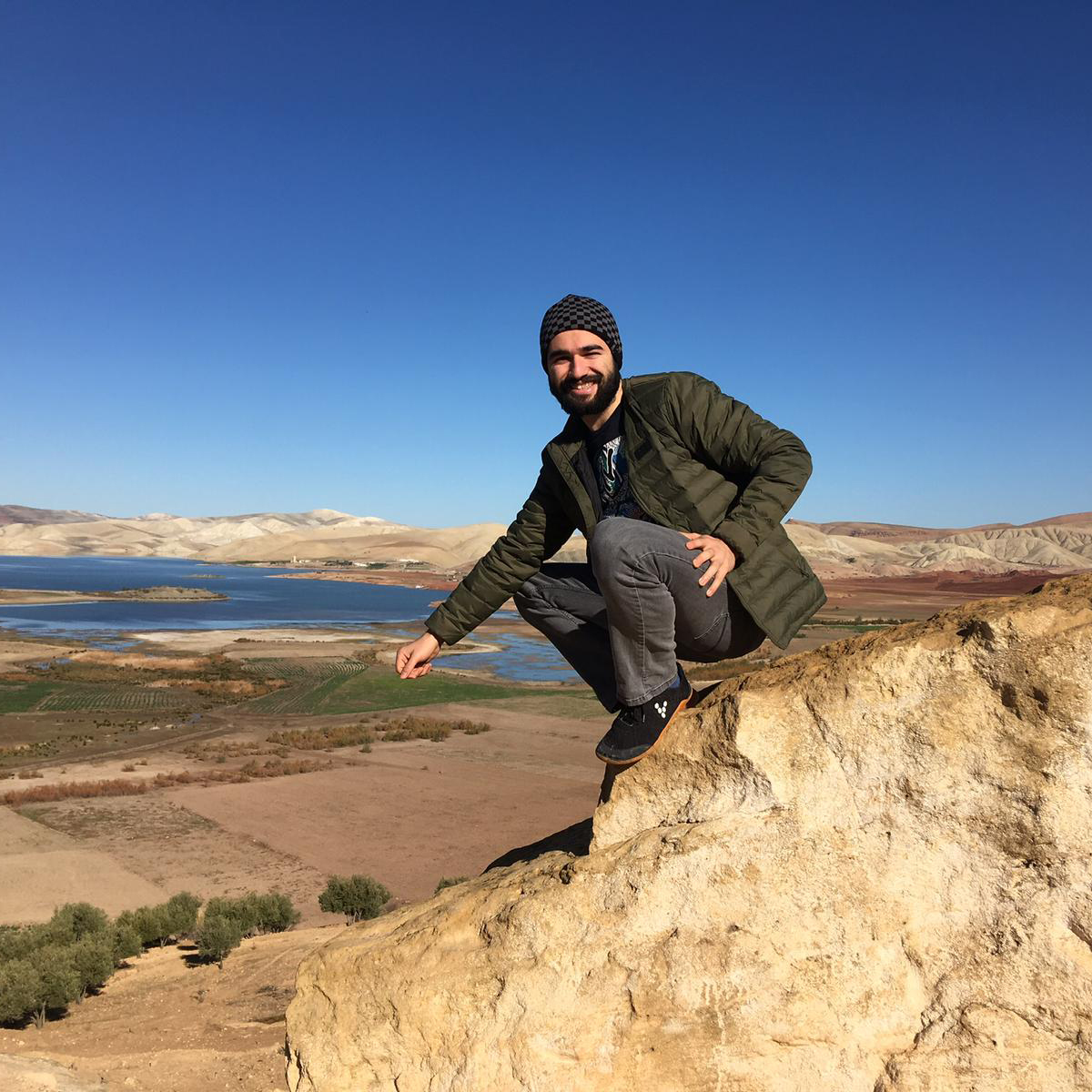
Growing up as a young child off the coast of Mallorca, I was always taught the value of having a good work ethic and not shying away from an honest day of hard work. As a university student living in London, those values stuck with me and became a founding part of my identity that I wanted to carry through into my professional working life.
In the hustle and bustle of London living, the ethics and actions of working hard are considered a worthy badge of honour amongst our peers and professional colleagues. Alongside the ethics of hard work that many institutions try to cultivate, there are a host of accompanying, unwritten working behaviours which are all thought to result in better work productivity. Behaviours such as doing longer working hours, skipping lunch so that you can do more work, having several high strength coffees in the morning to give you that little boost before you get into the office and CUTTING DOWN ON YOUR SLEEP TO ALLOW FOR MORE TIME TO GET WORK DONE!
For so many of us, sleep is something we feel duty bound to do on a daily basis (mainly due to how we feel when we don’t get enough of it!) but it is not something that many of us value to the same degree as having a good diet or being physically fit. In reality, in order to achieve better work performance, greater creativity, continue to develop our intellect and improve performances on the pitch or in the gym; sleep is one of the vital common lifestyle factors that allows our brains and body to properly recover in order for us to be able to achieve our goals and move beyond them.

From the middle of the 1960s, sleep has been something that has been progressively pushed to the back of the line in terms of importance within our daily lives. On average, we now sleep around 25% less (up to 2 hours) than our counterparts 60 years ago. I myself have been guilty of this in the past! During the first few years of my osteopathic degree, I was often sacrificing my precious sleep time in order to get some extra study done, squeeze in a little bit of surplus training or watch another episode on Netflix! Whilst I thought I was making the most of what life had to offer, during those early years, I had regularly suffered with intermittent episodes of dizziness, some strange periods of unexplained pain and occasional difficulty in remembering information. Upon reflection, all of these bizarre symptoms had been due to repetitive sleep restriction.

Not only can repetitive sleep restriction effect the function of your mind in terms of creativity, memory retention and work productivity, but it can also affect your physical performance, your ability to recover from training and even your ability to lose body fat. This was apparent with one of my patients, whom I managed to help drop a kilogram of body weight in only a week, simply by getting her to improve some of her sleep habits!
Ask any athlete at the top of their profession how much they value their sleep and all of them from Cristiano Ronaldo to Serena Williams, will tell you that disrupting their habit of sleep is a golden rule never to be broken.

From my study and research into the field of sleep, I realised that creating the daily habits of good sleep hygiene is a skill which needs to be trained. And, once I managed to establish those habits, I feel incredible and have never looked back since!
So to get you going on your journey to a life of more energy, better performance and inspiring creativity; here are a few sleep tips to send you on your way. Please remember, that learning to implement the following tips is a skill like any other, and there may always be bumps along the way!
So here are my top three tips for getting some better sleep:
- Go to bed and wake up at the same time everyday. Our bodies actually run like clocks and the healthy functioning of our bodies are highly dependant upon the daily rhythms of our hormonal, immunological, digestive, organ and neurological systems. The term for the cyclical nature for how our bodies function is called our “Circadian Rhythm.” Being systematic with our sleeping routines help to keep our circadian rhythm running efficiently and smoothly.
- Have a technology and screen curfew for at least 60-90 minutes before going to sleep, and ideally keep these objects out of the bedroom. I know this can be a difficult task. However, try to fill these last two hours of the day with something your truly enjoy, like reading a book or socialising with friends or a partner. The idea is to substitute your screen time for something you find enjoyable, but which doesn’t keep your body alert and awake.
- Keep your bedroom pitch black and cool. Keeping a cool bedroom can help your body realise that it is time for bed; the ideal sleeping temperature is 18.5 degrees centigrade. The room should also be extremely dark. The room should be so dark, in fact, that it is difficult to see your hand in front of your face when the lights have been turned off. Remember that darkness symbolises bedtime, and that regularly creating this association can be helpful in training your body to know when it is time to get some rest.
If you can relate to any of the problems mentioned above or you need more guidance to help you get a better night’s sleep please feel free to contact our sleep specialist, Yannick, via email at evorehab@gmail.com. Or better still, you can book online (www.evolutionrehab.com) for a remote sleep consultation with Yannick to help you achieve that perfect night’s sleep.
MOVEMENT FOR LIFE, NOT.........JUST FOR CALORIES (PART 2)
MOVEMENT FOR LIFE, NOT......... JUST FOR CALORIES!!! (PART 1)
The necessity of movement is an essential part of being human! Whilst many of the great minds of our time put forward that being human involves a variety of concepts such as imagination, empathy and intellectual consciousness, I would place the concept of movement as an equally integral part of existing as a human being. Within so many aspects of life, without the ability to move we become completely senile in our efforts to enact our thoughts in order to make them become a reality.
Read more
SUPPLEMENTS FOR HEALTHY LIVING?
At Evolution Rehab, one of the defining missions that we try to impress onto our patients is upon the education and understanding of the fundamental principles for sustainable, practical and healthy lifestyles within modern living.

We provide this foundation for healthy living through a baseline understanding and balance of the five key health factors which can determine our health. The five health factors being:
Read more
A WEEK IN THE LIFE OF ANATOMY IN MOTION
Autumn, the second week of September and I’m sitting on the tube crossing over to north west London to immerse myself within the Anatomy in Motion concepts presented by Gary Ward and Chris Sritharan. Having read Gary’s book (“What the Foot?”) over a year prior to the course, I was curious to learn more about Gary’s unique take upon human movement and gait (the study of walking). Guided by Gary’s five big rules of movement and his book, I was ready to take on his six day course and venture out of my comfort zones!
I was not dissapointed! Right from day one, we were taken through a week of both understanding and learning a comprehensive map of the human body which detailed the actions of every joint in the body as it moves through the six phases of gait; STRIKE, SUSPENSION, TRANSITION, SHIFT, PROPULSION & SWING. Using the map as a guide, we were then shown how every joint in the body is affected and moved in all directions during each phase of the gait cycle. We were also provided with a detailed education upon foot mechanics as it happens when the foot hits the ground up to the point upon when it leaves the ground to take another step forward. Through this detailed exploration, we were able to identify how missing links of movement found within the different phases of gait coupled with possible pain and movement dysfunction in the body. It was amazing to physically see how a problem with someone’s foot could be the cause of their chronic neck pain, or how their long standing wrist injury can affect the mechanics of their knee. The detailed map created by Gary made it possible to link these movement dots together.
The solution to fixing the movement dysfunction was a demonstration of genius in simplicity of the highest order! It resulted in giving back the pieces of the gait cycle that the individual is missing. Hence, through engaging in a variety of gait related exercises one is able to either structurally or neurologically restore the movement dysfunction and as Gary would say, “Bring the individual back to centre!”
The premise of the course was equally enlightening as I now possessed a medium of healing that is accessible to nearly all of my patients and one that will continue to heal them with every step that they take! Of course, Anatomy in motion and Gary’s movement concepts represents so much more than the not so simple task of beautiful, efficient gait but if I can help all of my patients walk better and bring them “Back to centre”, I feel that would be an extremely good position to start their journey back to movement health!
Problems with your feet or walking in general? Please feel free to get in touch with any queries.
